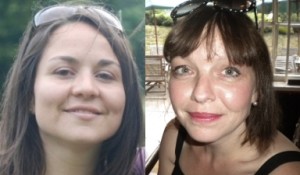
Exploring Bullying with Adults with Autism and Asperger Syndrome is the new workbook by Anna Tickle, a clinical psychologist, and Bettina Stott, who after many years working in the field is currently studying towards her MA in Autism.
Here, Anna and Bettina answer some questions about their new book.
Tell us about this project – how did you come to write this book?
We were running a self-esteem group for adults with autism in Surrey as a joint project between the National Autistic Society and the local NHS Community Learning Disability Team. It quickly became clear that bullying was a major issue for many individuals with autism spectrum disorder, in their adult lives as well as during childhood. Bullying had had a major impact on the group members’ self-esteem. Individual disclosures amongst group members of bullying experiences, confusion around what bullying is, and feelings of anger and guilt prompted us to look for resources but we found very little for adults. Initially we worked with the group to make their own workbook around bullying, which then formed the basis of our book. Through our experiences of working with other groups and individuals with ASD we felt that a book such as this could be beneficial to many more people with ASD.
Why are people with ASD particularly vulnerable to bullying? Does bullying get better or worse as people with ASD get older?
Many people with ASD struggle to make sense of social interactions. They often do not realise that they are being bullied or come to assume that being bullied is a ‘normal’ way to be treated by others. In our book we look at the characteristics of ASD and explore how each of them can contribute to making someone with ASD vulnerable to being bullied. We try to give alternative explanations to help someone with ASD decide whether they are being bullied or not. In many ways the book not only addresses being the victim of bullying, but also helps individuals to personalise and make sense of their own ASD.
From our experience bullying is a fairly constant aspect of life for many people with ASD. Sometimes people get better at being assertive as they get older, at other times they withdraw to avoid bullying situations, increasing social isolation and loneliness.
The book also addresses people with ASD who have been bullies themselves. Why might they be prone to bullying?
Just as many individuals with ASD struggle to read others, they may also lack awareness of how other people see them and the effect their behaviour is having on other people. We are very clear that having ASD does not make somebody a bully, but that some of the characteristics of ASD might make people with ASD vulnerable to bullying others or being seen as bullies by others. We explore these characteristics and offer explanations of how behaviour could be interpreted by others. At the same time we invite readers to explore their feelings, thoughts and behaviours before, during or after bullying somebody. We think such reflection is important to help people develop appropriate and sustainable alternatives to bullying behaviour as it is not always easy to just stop bullying.
Although it can be used by support professionals, the workbook addresses people with ASD directly. How does this inform the content, writing and tone of the book?
The book is based on the experiences of our group so the content and tone of the book reflects this. We tried to keep the book very structured and used language that is clear, precise and easily understood. At the same time, both the language and content are aimed at adults and we do not shy away from discussing some of the more ‘adult’ issues that might be related to bullying, including sexual bullying, alcohol or drug use and self-harm or suicide.
What are some antidotes to bullying, and how do the exercises in the workbook help to foster those in people with ASD?
Firstly, knowing and reading about other peoples’ experiences of bullying lets the reader know that they are not on their own. We suppose that the basis for good self-esteem for many individuals with ASD is a better understanding of themselves, their strengths and areas of development. In addition, we have dedicated a whole section to explore the description and relationship of thoughts, feelings and behaviours. Based on our experiences, we discovered that many individuals with ASD struggle to separate thoughts, physical and emotional feelings and lack awareness of how these contribute to subsequent behaviours. So, with regard to antidotes, we aim to explore ASD, guiding each reader to explore and gain a better understanding of their own unique ASD characteristics and how these impact on bullying experiences. Another antidote is the continuous thread of exercises and room to think and write about your own experiences, to set these into a new context each time. So it may be a case that one bullying experience is looked at from different perspectives (i.e. victim, perpetrator, bystander) to help the reader decide on alternative ways of behaving. We know and understand that bullying can be difficult to escape from. This is why we have included a ‘Last Resort’ plan to help individuals with ASD to make major changes in their lives. However, we hope that with the help of the book and support from others, fewer people will reach the point of needing a ‘last resort’, either as victims or perpetrators of bullying.
Copyright © Jessica Kingsley Publishers 2010.